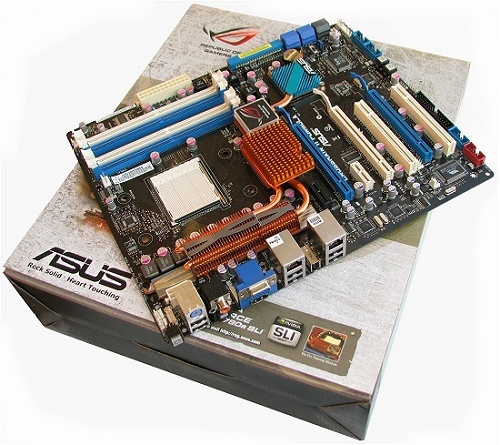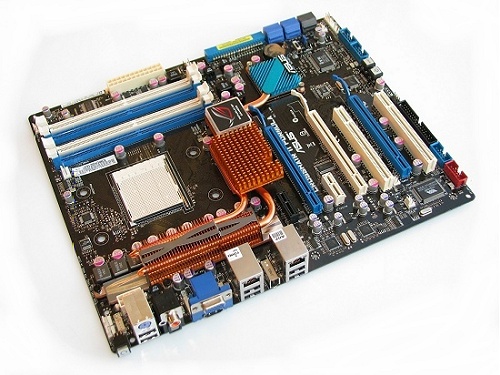Features & Specifications
As you can imagine being a high-end Asus motherboard with a retail value of just under $300, the Crosshair II Formula is very well equipped. Sporting the Nvidia nForce 780a SLI chipset, this motherboard supports all AM2 and AM2+ processors, along with Hybrid and Triple-SLI.
The Crosshair II Formula can support a maximum of 8GB memory in a range of speeds up to DDR2-1066 in dual-channel mode.



The nForce 780a SLI chipset includes support for dual PCI Express 2.0 x16 ports, six PCI Express x1 ports, twelve USB 2.0 ports and HD Audio. The south bridge chip supports native Gigabit Ethernet connections and RAID5 support for up to six Serial ATA 3.0Gb/s drives. The Crosshair II Formula features four DDR2 memory DIMM slots with official support for 533/667/800/1066 memory (non-ECC, un-buffered), though official DDR2-1066 memory support is limited to AM2+ processors.
The board features three PCIe x16 slots and two PCIe x1 slots (one is used for the SupremeFX II audio card). Please note that the Crosshair II Formula features 3-Way SLI support using PCIe x8 bandwidth across the three PCI Express x16 ports. Those using typical SLI with two graphics cards can use the full PCIe x16 bandwidth for each card.
Rather than stick the audio solution on the same PCB as most boards do, Asus has 'saved' valuable real-estate by going with a soundcard-like approach. What they call the "SupremeFX II" has existed for some time now, this small PCI Express x1 card features an Analog Device AD1988B HD Audio CODEC, supporting 10-Channels and up to 101dB performance. The SupremeFX II should essentially be the same as any other on-board AD1988B audio.



There is an abundance of USB 2.0 support, with six ports located on the I/O panel and another six supported via on-board headers. Asus has included one expansion bracket which supports two ports, while the others have been left to be used with a case's front panel connectors. The chipset also supports six Serial-ATA 3.0Gb/s ports that feature the Nvidia MediaShield technology, while these SATA ports also support RAID 0, 1, 0+1, 5 and JDOB.
The back panel I/O ports include one PS/2 port (keyboard), one Optical and one Coaxial (S/PDIF Output), along with two LAN ports, six USB 2.0 ports, one Firewire port, and a Clear CMOS switch. There is also a VGA port, along with a HDMI port, which can also be used to output DVI using the supplied dongle. Completing the I/O panel is the specially designed Asus Q-Shield, featuring better electric conductivity. It is meant to protect your motherboard from static electricity and shields it against Electronic Magnetic Interference (EMI).
